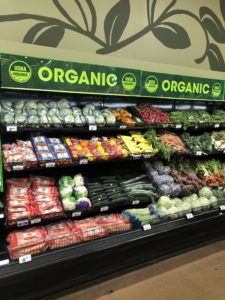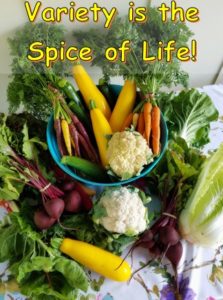 A few weeks ago, we shared a coaching tip to answer some of the questions we are frequently asked.
A few weeks ago, we shared a coaching tip to answer some of the questions we are frequently asked.
Thanks to your responses, we are answering some more questions we have been hearing recently.
Let’s dive in!
What do you tell people who say it is too expensive to eat healthy?
We hear this A LOT. We heard it three times in one day at a corporate wellness event we recently participated in. Many perceive that it’s too expensive to eat REAL food – or eat healthy. There are a few key considerations when answering this question.
 Compared to what? If the person you are talking to is like the typical American, they may eat out, hit the drive thru, or order carry out several times each week. On average, people eat out 4 to 5 times per week. For a family of 4, they could easily spend $50 to $60 on each of these meals. If they reduced this to just one time per week and cooked delicious, healthy meals at home the rest of the week (like these 10 Meals for Under $10), they could save $150 every week (and $7,800 over the course of a year)! Compounded over 10 years, that over $100,000!
Compared to what? If the person you are talking to is like the typical American, they may eat out, hit the drive thru, or order carry out several times each week. On average, people eat out 4 to 5 times per week. For a family of 4, they could easily spend $50 to $60 on each of these meals. If they reduced this to just one time per week and cooked delicious, healthy meals at home the rest of the week (like these 10 Meals for Under $10), they could save $150 every week (and $7,800 over the course of a year)! Compounded over 10 years, that over $100,000!
- Simple strategies to make it affordable. There are all kinds of ways to make healthy eating affordable. Just a few include:
- Stock your pantry with the right staples
- Buy in-season and local ingredients (look for “seconds” at the farmers’ market that are offered at a discount)
- Have a plan (to reduce food waste at home and to avoid getting stuck with eating out as the only option)
- Cut meat portions in half while you bump up beans (yes, they can be canned!) and watch your grocery bill go down!
- Stock up on discounted and sale items (especially foods that freeze well)
- Scale back on what you spend in the snack aisle while you spend more in the produce aisle — more produce without more cost!
- Love your leftovers
- Make your own dressings, drizzles and sauces
- Grow your own (whether it’s an entire garden or just some fresh herbs, this is a great cost saver)
 Total cost of your health. There is no disputing that an unhealthy diet increases healthcare costs (for doctors’ visits, medications, and other medical related expenses). Over a lifetime, there is no doubt that your combined cost of food and medical expenses is likely to be significantly lower with a REAL food lifestyle compared to the Standard American Diet. Plus, your quality of life will be so much better!
Total cost of your health. There is no disputing that an unhealthy diet increases healthcare costs (for doctors’ visits, medications, and other medical related expenses). Over a lifetime, there is no doubt that your combined cost of food and medical expenses is likely to be significantly lower with a REAL food lifestyle compared to the Standard American Diet. Plus, your quality of life will be so much better!
There is one more consideration. If you have been eating the Standard American diet and you switch to a REAL food lifestyle, you may find yourself needing to buy new clothes. That’s probably money you’re more than happy to spend!
If you want to read more on this topic, check out these coaching tips:
Is Eating Healthy Really More Expensive?
15 Ways to Beat High Food Prices
When I am buying fruits and vegetables, should I only buy organic?
 This obviously goes hand-in-hand with the question above. First, strive to eat 8-10 servings of vegetables and fruits every day, whether organic or conventional. Even conventional produce is better than other foods prevalent in our culture, especially all the ultra-processed foods.
This obviously goes hand-in-hand with the question above. First, strive to eat 8-10 servings of vegetables and fruits every day, whether organic or conventional. Even conventional produce is better than other foods prevalent in our culture, especially all the ultra-processed foods.
Buying organic can provide additional benefits. The primary benefit is organic foods are free from synthetic fertilizers, pesticides and GMOs. Some studies have also shown that organic foods are higher in nutrients vs. conventional. However, this hasn’t been proven definitively. Remember, there are many variables that affect the nutrition of our foods. It’s very difficult for researchers to deal with all these variables to isolate a study down to the nutritional differences between organic and conventional foods.
The cost difference between organic and conventional foods seems to be narrowing, especially for certain types of food. For example, we routinely find the organic kale at our local store to be the same price as the conventional variety. While this is good news, it’s still more expensive to eat exclusively organic foods.
To help you prioritize when to buy organic, the Environmental Working Group (EWG) publishes its “Dirty Dozen” (produce with the highest levels of pesticides) and “Clean 15” (produce with the lowest levels of pesticide residues) lists every year.
Last month, they published their 2024 lists:
Don’t forget your local farmers!
By far, our preference is buying from local farmers who use organic practices. For these local farmers, it can be cost and time prohibitive to get the official USDA organic certification. So, farmers may actually use organic practices, but can’t officially call their food “organic” because they haven’t gone through the certification process.
If you ask your local farmers how they grow their produce, they will be happy to tell you. Some will even let you visit their farms to see it first-hand! We would rather buy from a local farmer who uses organic practice (even if they are not certified) vs. buying the certified organic variety from the store. This local produce was probably harvested within the past day or two, while the variety in the store has likely traveled 1,000 miles or more over the course of days or weeks before finally reaching the store. This means the flavor and nutrients will be far superior to the store option and, of course, better for the environment too.
Oats and soy too! If you can, it is a good idea to buy organic when it comes to oats and soy products (like edamame, tempeh and tofu). These products have historically tested positive for herbicides like glyphosate. While this situation seems to be improving, we still make it a priority to buy the organic versions of these foods (and the cost really isn’t that much higher).
One final thought on this – remember that organic junk food is still junk food!
I have heard that cooking fruits and vegetables destroys their nutrients. Should I try to eat these foods raw?
Short answer: Eat them however you enjoy them!
 Longer answer: In some cases, cooking can reduce certain nutrients in fruits and vegetables. In other cases, it can actually enhance your body’s ability to absorb and use those valuable nutrients. Take lycopene for example. This powerful antioxidant is found in many fruits and vegetables including tomatoes, red bell peppers, and asparagus. When heated with a good source of fat (like extra virgin olive oil), the lycopene molecules become easier for body to absorb into your bloodstream. So, by cooking fresh tomatoes with extra virgin olive oil and some herbs and spices to turn them into a delicious pasta sauce, you are actually improving your body’s ability to make use of the lycopene.
Longer answer: In some cases, cooking can reduce certain nutrients in fruits and vegetables. In other cases, it can actually enhance your body’s ability to absorb and use those valuable nutrients. Take lycopene for example. This powerful antioxidant is found in many fruits and vegetables including tomatoes, red bell peppers, and asparagus. When heated with a good source of fat (like extra virgin olive oil), the lycopene molecules become easier for body to absorb into your bloodstream. So, by cooking fresh tomatoes with extra virgin olive oil and some herbs and spices to turn them into a delicious pasta sauce, you are actually improving your body’s ability to make use of the lycopene.
So, rather than obsess about which ones to cook and which ones to eat raw, just enjoy a wide variety of vegetables and fruits in different combinations. Raw, grilled, roasted, sauteed, you name it. However you like them and whatever mood you’re in!
The key is to eat 8-10 servings of vegetables and fruits every day! Where have you heard that before?!
Zonya Says:
I will be diving even deeper into these last two questions (and much more) in my upcoming “Fight Cancer with Your Fork” livestream program. It kicks off Thursday, May 2nd, and we will meet every other week for 4 sessions. You can save 15% before May 2 with coupon code FIGHT15. We can’t wait to see you there, visit Zonya.com to learn more!
WE HOPE THESE FAQS ARE HELPFUL!
ASK US YOUR QUESTIONS AND WE WILL TRY TO ANSWER THEM IN FUTURE “ASK US ANYTHING” COACHING TIPS!
 LEARN MORE ABOUT THE NAPKIN!
LEARN MORE ABOUT THE NAPKIN!



Great article!